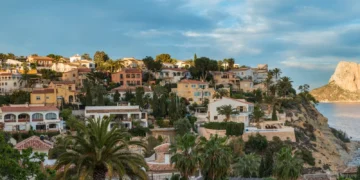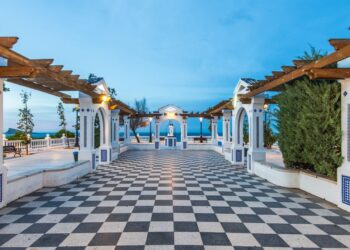С
alpe’s historical heritage offers a fascinating journey through centuries, reflecting the influence of various civilizations that left their mark on this coastal town. Its history is closely tied to its strategic location on the Mediterranean, making it a significant hub for trade, defense, and fishing. Let’s delve into the key historical landmarks of Calpe.
Los Baños de la Reina (Baths of the Queen)
One of the most significant archaeological finds in Calpe is a complex of Roman baths and salt ponds known as Los Baños de la Reina (Baths of the Queen). This site dates back to the 3rd-5th centuries AD and represents unique structures where the Romans harvested salt and cultivated fish.
The baths are named after a legend that they were used by a queen for bathing, although in reality, they served industrial purposes. Visitors can explore the remains of pools and channels used for salt production and fish farming, showcasing the Romans’ advanced engineering and their ability to adapt to the coastal environment.
Peñón de Ifach and Torre Molinar
Peñón de Ifach is not only a natural symbol of Calpe but also a historically significant site. In ancient times, this towering rock served as a watchpoint for guarding the coast and warning of pirate or enemy invasions.
At the top of Peñón de Ifach, remnants of old defensive structures and watchtowers can still be seen. One such tower is Torre Molinar, one of the oldest watchtowers on the coast. This tower played a crucial role in protecting Calpe from pirate attacks, which were common in the Middle Ages.
Old Town of Calpe
The Old Town of Calpe is the cultural heart of the city, where remnants of its centuries-old history still stand. Walking through its narrow streets, visitors can see traces of medieval fortifications and old houses built in traditional Spanish style.
One of the main attractions in the Old Town is the Church of Nuestra Señora de las Nieves, built in the 14th century in a Gothic style. This church is a blend of architectural styles — from Gothic to Neoclassicism, reflecting the town’s long history and the changes it underwent.
Another significant landmark is the Torreón de la Pesa, a 16th-century defensive wall built to protect the town from Berber pirate attacks. Next to the tower is the Casa de la Senyoria, a fortified house that served as both a defensive structure and a residence.
Mural of La Plana
Mural de La Plana is a unique example of modern art integrated into the town’s historic setting. This colorful fresco complex, created in the 1970s, covers one of the town’s old walls. The mural represents a symbolic depiction of Calpe’s history and serves as a demonstration of how the town preserves its traditions while embracing contemporary art.
Museums in Calpe
Calpe also offers visitors the chance to dive deeper into its history through several museums. One of the most important is the Archaeological Museum of Calpe, which tells the story of the region from prehistoric times to the Middle Ages. Visitors can see artifacts found around the town, such as ceramics, weapons, and coins.
Another intriguing museum is the Museum of Collecting, located in the building of the old town hall. This museum is dedicated to private collections and includes exhibits related to the town’s culture, history, and traditions.
Moorish Influence
After the fall of the Roman Empire, Calpe was under Moorish rule for several centuries. This period also left its mark on the town’s architecture and culture. The Moorish influence can be seen in local ceramics, art, and even the layout of some old streets.
The Moors ruled Calpe until the early 13th century when the town was conquered by King Jaime I during the Christian Reconquista. This period brought significant changes to the town, leading to the construction of new fortifications and churches, many of which still stand today.
Conclusion
Calpe’s historical heritage is a captivating blend of different eras and cultures. From Roman baths and medieval fortifications to Moorish influences and modern art, Calpe offers a unique journey through time. The town’s historical monuments not only tell the story of its rich past but also create a unique atmosphere where ancient history blends seamlessly with modern life and culture.

























